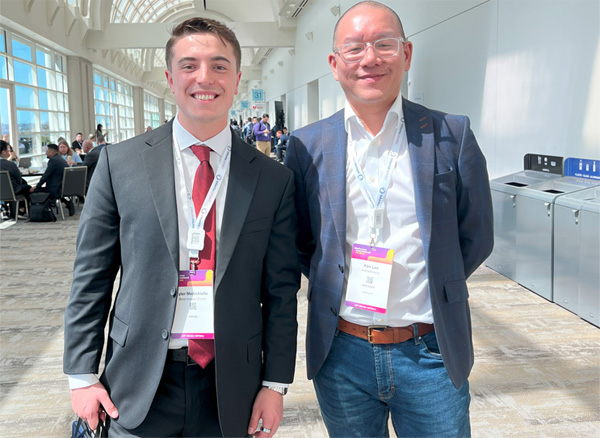From BPI West: Key Challenges And Benefits Of Continuous Manufacturing

By Tyler Menichiello, Chief Editor, Bioprocess Online

As I mentioned in my coverage of this year’s BioProcess International (BPI) U.S. West conference, continuous manufacturing was a hot topic of conversation — and one that isn’t going away any time soon. After his time on stage in the Fireside Chat: “Continuous Vs. Fed-Batch: The Ongoing Debate,” I had the pleasure of speaking with AstraZeneca’s director of bioprocess technologies, engineering, and biopharmaceuticals R&D, Ken Lee, Ph.D. I asked him about the value of continuous processes and the present barriers to widespread adoption. The following is a slightly revised transcription of our conversation (edited for clarity).
You were talking about how product attributes can influence whether continuous manufacturing might be a good fit. What are some molecule-specific considerations that would make one product more favorable for continuous processing versus another?
In the presentation, I mentioned enzymes, which break down very quickly in a 37-degree environment. What we've seen with some of our enzymes is that their potency starts at 100%, but in fed-batch, that can drop down to 20% or even 10%. In perfusion, that potency can stay around 90% because we're able to get the product out much faster. It’s not stuck in that 37-degree environment where it will start to break down.
Enzymes are a clear example, but we also have products that self-associate and self-aggregate, which happens a lot faster at higher temperatures. Some products don’t degrade at 37 degrees because of their own instability, but rather because of enzymes released by the cells that can cause fragmentation and clipping. If we can get those products out of the bioreactor faster, we can get higher quality yields. That high quality product then means a lower dosage, because the potency is higher.

Ken Lee, Ph.D., (right) and Bioprocess Online's Tyler Menichiello
In the panel discussion, you mentioned the importance of knowledge sharing when it comes to continuous manufacturing and wider adoption. How can we increase that knowledge sharing across the space?
AstraZeneca is part of industry collaborations like AMBIC, BioPhorum, and NIIMBL, and it's really those environments that I think a lot of learning is going to happen. I'm very involved in NIIMBL; I'm one of the leads for the process intensification test bed. We’re setting up a 50-liter bioreactor along with downstream equipment to support continuous manufacturing for an audience that may have little or no experience working with it.
We have continuous environments and continuous test beds ourselves, internally, but there are other companies that don't. Smaller companies and CMOs don't necessarily have the same capabilities or the same money to be able to throw at long-term problems because they're worried about their current short-term problems. So that's what we're hoping to be able to do as part of NIIMBL.
It's great if AstraZeneca has an advantage, but there's limits to how far AstraZeneca can go on its own. We would need to build our own facilities. We would need to train our own staff and attempt to retain all that staff as well.
Fed-batch is difficult compared to batch, and continuous is difficult compared to fed-batch, but we've done much more complicated things. It's just unknown, so it's hard for people to imagine. I think by being part of these industrial collaborations and leading by example, we can do our part and help share knowledge around continuous manufacturing.
What are the biggest weak points right now in continuous manufacturing that need to be improved before we see wider adoption?
The biggest challenge I would say is capacity. Aside from Genentech and Amgen, even large biopharmaceutical companies don't have enough manufacturing space. AstraZeneca is a classic case of that. We have two manufacturing sites, three manufacturing sites maybe. If the drugs that we are pushing through our pipeline now all make it through — and these are just late-stage drugs — we will need four times the capacity that we currently have.
That’s really difficult to do. And unfortunately, there are not many CMOs that do continuous manufacturing. One of the biggest constraints for us is that if we wanted to pursue a continuous approach, we would likely need a CMO, and very few can provide that.
So there’s a real need to build that CMO space. Smaller companies may not have their manufacturing space set up or may not have enough manufacturing space, and they also rely on CMOs. I think if we can get the CMO landscape to the point where continuous is a real possibility for 50% or more of those CMOs, then it will start to snowball because of that availability.
What would you say to somebody who’s looking into continuous manufacturing or even considering it?
Don't be afraid to try. It costs a lot of money to do and to set that lab up, but every continuous operation started with someone taking a step forward just to try and see what it looks like.
